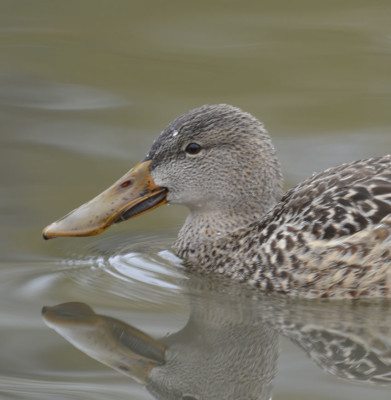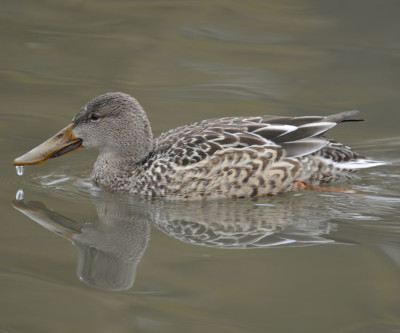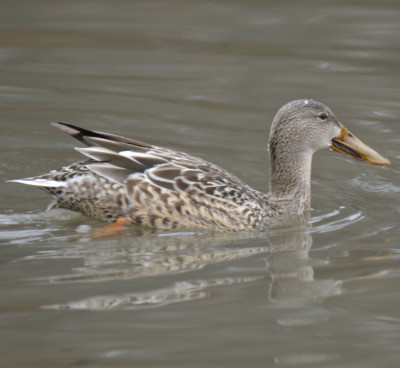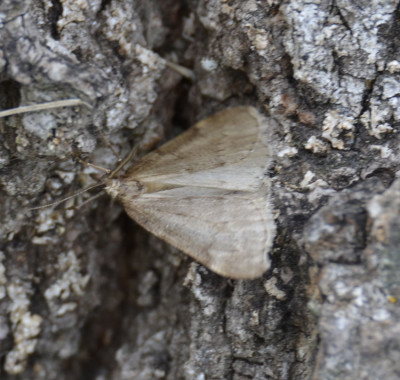In Mississauga at the outlet of the Credit River into Lake Ontario is a very domesticated park called J. C. Saddington. As well as a small band stand, it has a traditional duck pond which is well populated with Mallards and Canada Geese and an occasional migrating visitor.
Seeking Inspiration in the Everyday, I Accidentally Observe the Unusual
I’m not a photographer. I don’t have an artistic eye that can see how to frame a photo to capture a mood, encapsulate a moment in time, or symbolize an essential issue. I basically just try to fill the frame with a plant, insect or animal and press the trigger. Since I also can’t hold my camera steady, I take zillions of shots and hope for the best.
I like the work of photographers, though, so I do read the occasional book on how to improve. One I’m currently savouring, because the writing is very powerful, is called Photography of Natural Things by Freeman Patterson.
He inspired me to slow down and look at the Mallards in the Saddington duck pond through the lens and think about what I might want to capture about them. I didn’t get any good photos but I tried. I looked at the pencil-line zebra striping details on a male, the head’s peacock greens and blues, and the water beading up on feathers when a duck “bottom up’d” to pluck tidbits out of the mucky pond.
Different ducks kept swimming closely by to check that I wasn’t throwing any of the day-old Dempsters that they adore. One female duck cruising by startled me.
Her bill was huge. So large, in fact, it looked like a Shoveler. But overall, it wasn’t a particularly big duck. It had orange legs, like the other Mallards. It had light brown and white feathers not particularly unlike the other female Mallards. Its bill was within the same rainbow of yellow-orange-black-mucky bills that all the Mallards sported. But the size and shape of her bill were wrong.
I only managed a few id photos before she moved away and I allowed myself to be distracted by three Bufflehead diving. Bufflehead are the tiny ducks that pop back up from a dive like someone released a rubber ducky underwater: they shoot to the surface and float high in the water.
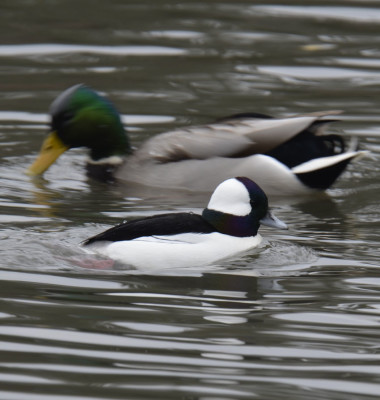
A male Bufflehead in front of a male Mallard.
When I arrived home, I looked very closely at my duck photos and sought the opinions of some more dedicated naturalists. Yep, that female duck with the enormous bill had been a female Northern Shoveler. A cruise around eBird showed that several large flocks of them had been spotted the same day at various parks. Why this one bird chose a city duck pond to touch down and rest in I couldn’t say but it did make my day.
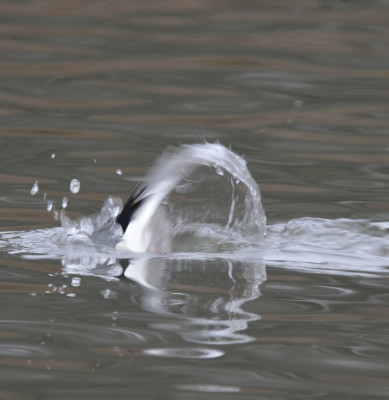
Most of my Bufflehead photos look like this one.
December Moths May be the Latest I’ve Seen Flying
Another unusual sighting came when I walked down the waterfront trail to the western end. Dancing around the base of a tree was a pale tan coloured moth! It was about 6 C that afternoon so I wasn’t totally shocked but even so it was a surprise.
I suspect it is the same type of moth that I have seen in late autumn in other places like Riverwood Conservancy. Usually they are moving too quickly, always low to the ground at the base of trees, for me to catch a photo. This one was more cooperative. It still didn’t alight, except for less than a second, but it stayed fluttering up and down along the same part of the tree trunk for over a minute.
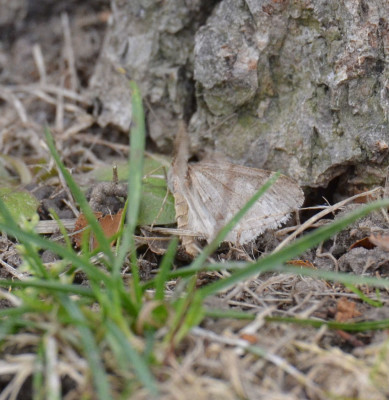
This moth had an odd-looking body.
A second moth of apparently the same type actually flew by it and moved quickly off towards other tree trunks. I didn’t try to chase it as it was behaving too similarly to the ones I always fail to photograph.
Is This Pale Tan Moth Fluttering at the Base of a Tree in December an Autumnal Moth?
Once home, I wondered if I could identify what type of moth it is. Top contenders are called Autumnal Moths and, less likely, Winter Moths. The Autumnal Moths are native and the Winters are a new invasive from Europe. It doesn’t look exactly like the ones in the book (Peterson Field Guide to Moths of Northeastern North America) so I haven’t yet made a definite id. I’ll keep trying to find out but it’s such a simply marked moth it may not be that easy to confirm especially with less than great photos.
Even Late Late Autumn Can Offer New Natural Sights to See
The moral of the story is to never believe that it’s too cold, grey, windy, cloudy , foggy or late in the year to go out for a nature ramble. The weather was NOT inviting when I went for this early December walk, yet I had my closest view ever of a Shoveler and finally had a chance to photograph a moth I’ve been intrigued by for several years.
Related Reading
- Which Canadian Duck Has the Biggest Bill?
- Don’t Let the Green Head Fool You: That Duck Isn’t a Mallard
- One of These Mallards Is Not the Same
- What Dark Brown Moth has a Metallic Electric Blue Body?
- Leconte’s Haploa Moth Brightens Up a Dull Leaf
Join In
Have you ever seen moths in the forest just before the snow flies? Any guesses what kind they, or this one, might be? Please share your sightings of late fall moths and Northern Shoveler ducks!

